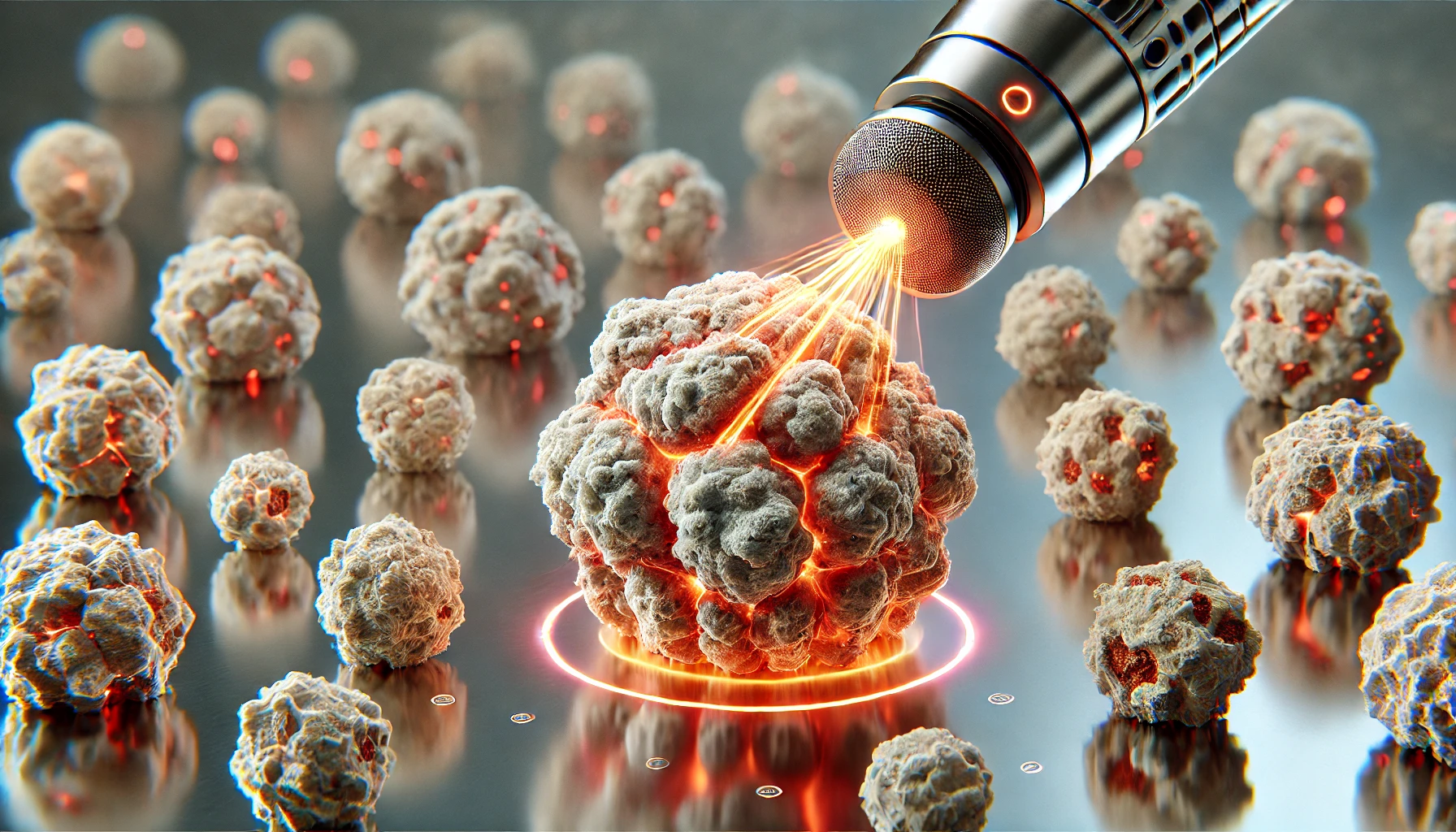¿Qué son las terapias térmicas y cuál es su efecto sobre las células cancerígenas?
DOI:
https://doi.org/10.20983/cienciavital.2025.01.sal.01Palabras clave:
Terapias térmicas, Cáncer, Hipertermia, Ablación térmica, Efectos biológicosResumen
Las terapias térmicas son tratamientos médicos que emplean frío o calor para el tratamiento de padecimientos presentes en el cuerpo humano. En oncología, se utilizan diferentes fuentes externas de calor para generar un incremento de temperatura en el tumor y producir diferentes efectos biológicos que provocan la muerte de las células cancerígenas. Estas fuentes de calor externas producen un incremento de temperatura en el cuerpo de manera regional o local, dependiendo del tamaño del tumor a tratar. Las terapias térmicas se clasifican de acuerdo con la temperatura alcanzada en la región de tratamiento o tumor, como: crioterapia, hipertermia y ablación térmica. La crioterapia consiste en lograr temperaturas por debajo de los - 20°C, temperatura a la cual se empiezan a formar cristales intracelulares que ocasionan la necrosis del tejido. Por otro lado, la hipertermia busca alcanzar temperaturas entre 41°C- 45°C en el tumor, ocasionando muerte celular dependiendo de la duración del tratamiento. Además, aumenta la efectividad de la quimioterapia y la radioterapia al sensibilizar las células cancerosas, aumentando el flujo sanguíneo en la región tratada, mejorando la entrega de oxígeno y medicamentos al tumor. En cambio, la ablación térmica produce muerte celular inmediata en el tumor al alcanzar temperaturas entre 60°C-100°C en segundos. Entre sus ventajas se encuentran que es mínimamente invasiva, requiere menor tiempo de recuperación, precisión y focalización de la inducción del calor, así como el hecho de que es un tratamiento localizado que minimiza el daño a tejidos sanos circundantes. Sin embargo, si no se tiene un control adecuado, se pueden causar quemaduras en tejidos sanos circundantes al tumor. Es necesario hacer notar que en este trabajo nos referiremos particularmente a las terapias basadas en el incremento de temperatura.
Citas
C. J. Trujillo-Romero, G. Rico-Martínez, and J. Gutiérrez-Martínez., “Thermal ablation : an alternative to bone cancer .,” Investig. en Discapac., vol. 7, no. 1, pp. 35–46, 2018.
Q. Dai, B. Cao, S. Zhao, and A. Zhang, “Synergetic Thermal Therapy for Cancer: State-of-the-Art and the Future,” Bioengineering, vol. 9, no. 9, Sep. 2022. https://doi.org/10.3390/bioengineering9090474
S. Jha, P. K. Sharma, and R. Malviya, “Hyperthermia: Role and Risk Factor for Cancer Treatment,” Achiev. Life Sci., vol. 10, no. 2, pp. 161–167, Dec. 2016. https://doi.org/10.1016/j.als.2016.11.004
V. Lopresto, R. Pinto, L. Farina, and M. Cavagnaro, “Microwave thermal ablation: Effects of tissue properties variations on predictive models for treatment planning,” Med. Eng. Phys., vol. 46, pp. 63–70, 2017. https://doi.org/10.1016/j.medengphy.2017.06.008
C. Brace, “Thermal Tumor Ablation in Clinical Use,” IEEE Pulse, vol. 2, no. 5, pp. 28–38, 2011. https://doi.org/10.1109/MPUL.2011.942603
C. J. Trujillo-Romero et al., “Thermal Evaluation of Multi-Antenna Systems Proposed to Treat Bone Tumors: Finite Element Analysis,” Sensors, vol. 22, no. 19, p. 7604, Oct. 2022. https://doi.org/10.3390/s22197604
WHO, “Electromagnetic fields and public health. Physical properties and effects on biological systems,” Fact Sheet, no. May, pp. 1-4 TS-Reference Manager DB p4 (via RIS-Export), 1998.
R. W. Y. Habash, R. Bansal, D. Krewski, and H. T. Alhafid, “Thermal therapy, Part 1: An introduction to thermal therapy,” 2006. https://doi.org/10.1615/critrevbiomedeng.v34.i6.20
J. R. Lepock, “How do cells respond to their thermal environment?,” Int. J. Hyperth., vol. 21, no. 8, pp. 681–687, 2005. https://doi.org/10.1080/02656730500307298
G. Baronzio, G. Parmar, M. Ballerini, and A. Szasz, “A Brief Overview of Hyperthermia in Cancer Treatment,” J. Integr. Oncol., vol. 03, no. 01, 2014. http://dx.doi.org/10.4172/2329-6771.1000115
J. R. Lepock, “Cellular effects of hyperthermia: relevance to the minimum dose for thermal damage,” INT. J. Hyperth., vol. 19, no. 3, pp. 252–266, 2003. https://doi.org/10.1080/0265673031000065042
W. C. Dewey, “Arrhenius relationships from the molecule and cell to the clinic.,” Int. J. Hyperth., vol. 25, no. 1, pp. 3–20, Feb. 2009. https://doi.org/10.1080/02656730902747919
P. Vaupel, F. Kallinowski, and P. Okunieff, “Blood Flow, Oxygen and Nutrient Supply, and Metabolic Microenvironment of Human Tumors: A Review,” Cancer Res., vol. 49, no. 23, 1989. [Online]. Available: https://aacrjournals.org/cancerres/article/49/23/6449/494447
G. Baronzio, V. Cerreta, A. Baronzio, I. Freitas, M. Mapelli, and A. Gramaglia, “Thermo-Chemo-Radiotherapy Association: Biological Rationale, Preliminary Observations on Its Use on Malignant Brain Tumors,” 2013.
P. B. Elming et al., “Hyperthermia: The optimal treatment to overcome radiation resistant hypoxia,” Cancers, vol. 11, no. 1. MDPI AG, 01-Jan-2019. https://doi.org/10.3390/cancers11010060
A. Chicheł, J. Skowronek, M. Kubaszewska, and M. Kanikowski, “Hyperthermia - Description of a method and a review of clinical applications,” Reports Pract. Oncol. Radiother., vol. 12, no. 5, pp. 267–275, 2007. https://doi.org/10.1016/S1507-1367(10)60065-X
H. H. Kampinga, “Cell biological effects of hyperthermia alone or combined with radiation or drugs: a short introduction to newcomers in the field.,” Int. J. Hyperth., vol. 22, no. 3, pp. 191–6, May 2006. https://doi.org/10.1080/02656730500532028
K. M. Bruce, Fisiología - Edition 7 - By Bruce M. Koeppen, MD, PhD and Bruce A. Stanton, PhD Elsevier Inspection Copies, 7th ed. Elsevier.
Robbins y Cotran, Patología estructural y funcional, 9.a ed. Elsevier, 2018.
S. L. Cruz-Martín-del-Campo, C. González-Espinosa, A. K. Ruiz-Quiñonez, and C. J. Carranza-Aguilar, “Tipos de muerte celular y sus implicaciones clínicas,” El Resid., vol. 15, no. 3, pp. 97–112, 2020. https://dx.doi.org/10.35366/95960

Publicado
Número
Sección
Licencia
Derechos de autor 2025 Citlalli Jessica Trujillo-Romero, Texar Javier Ramírez Guzmán, José Raziel Sánchez Sánchez , José de Jesús Agustín Flores Cuautle, Raquel Martínez Valdez

Esta obra está bajo una licencia internacional Creative Commons Atribución-NoComercial-CompartirIgual 4.0.





